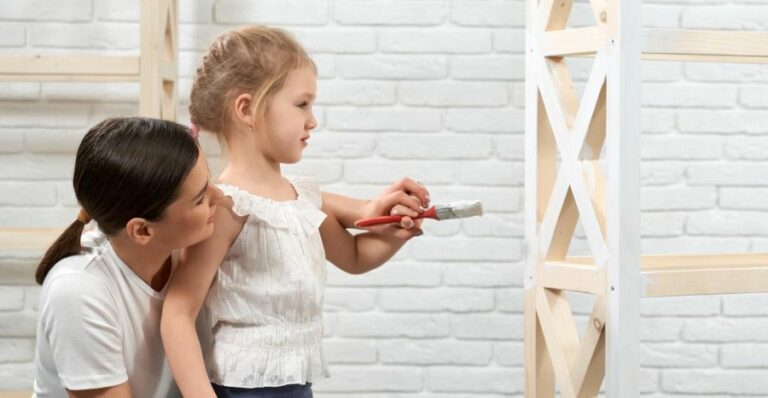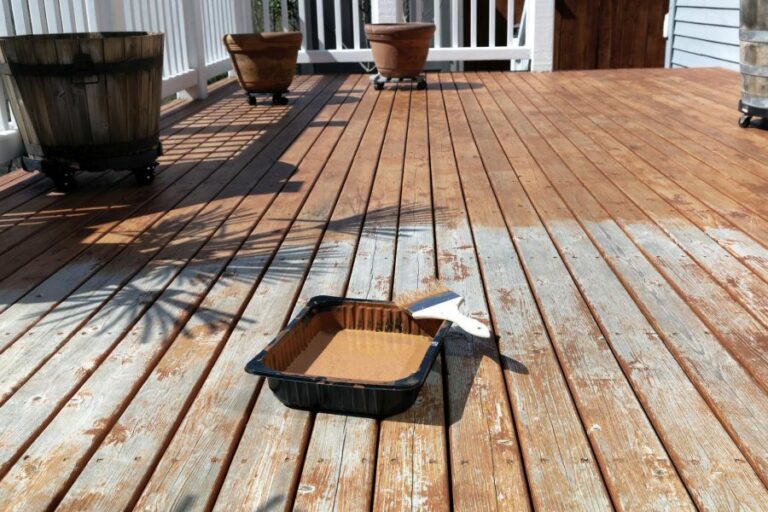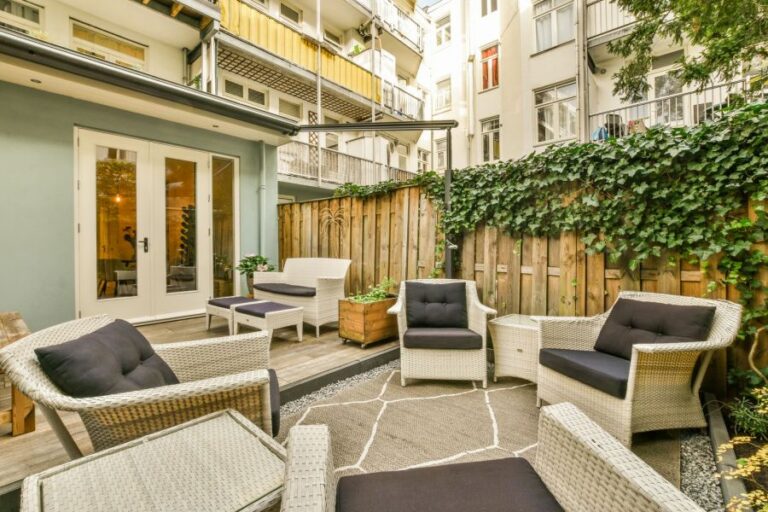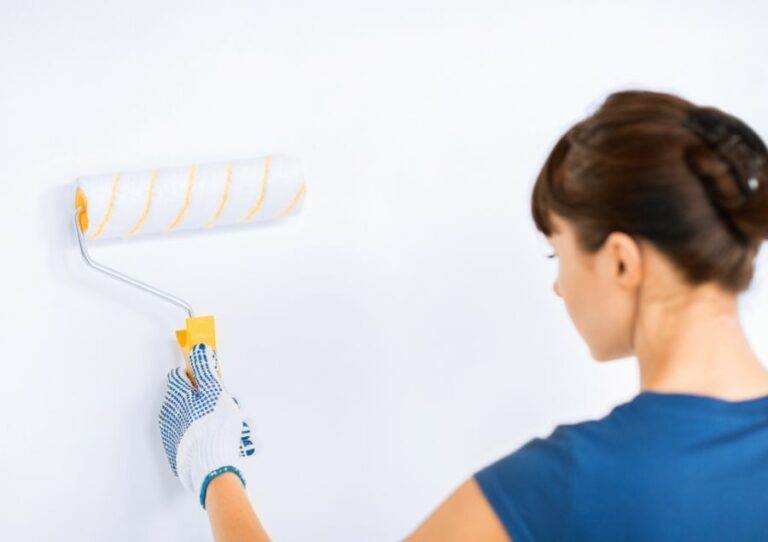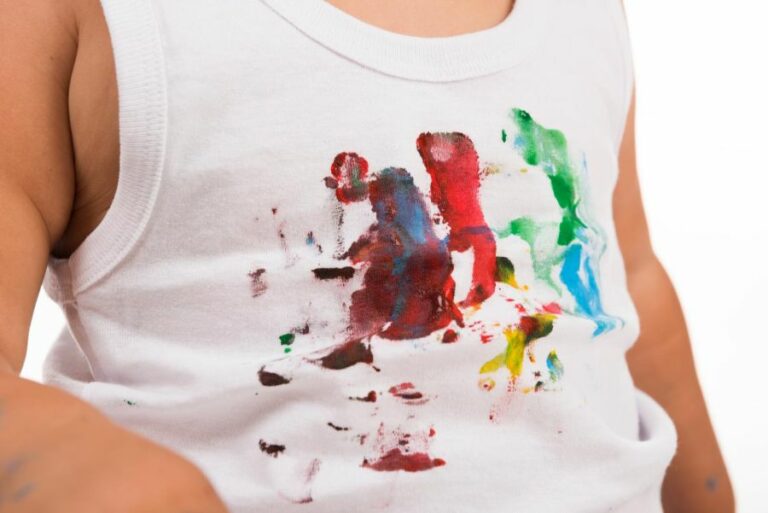Best Outdoor Wood Paint, 25 Things You Should Know
Are you looking to protect and elevate the appearance of your outdoor wooden surfaces? Finding the perfect wood paint ensures longevity and enhances your home’s curb appeal. This comprehensive guide on the best outdoor wood paint will save you from trial and error and provide insights into top-performing products and application tips.
Best outdoor wood paint:
Factors such as surface type, local climate, and maintenance requirements should be considered when choosing paint. Proper application, including surface cleaning, sanding, priming, and sealing, is crucial for optimal results and increased lifespan of wooden structures.

Discover top-notch outdoor wood paint options for your next painting project! My comprehensive guide will help you find the ideal paint, offering expert tips, lasting durability, stunning aesthetics, and budget-friendly choices. Transform your wooden surfaces with confidence now!
Contents
- 1 Top-Quality Exterior Wood Paint for Outdoor Surfaces
- 2 What Kind of Paint is Most Suitable for Exterior Wooden Surfaces?
- 3 What is the Most Durable and Long-Lasting Outdoor Paint for Wooden Surfaces?
- 4 What is the Most Effective Waterproofing Paint for Wooden Surfaces?
- 5 What is the Most Durable and Long-Lasting Exterior Paint?
Top-Quality Exterior Wood Paint for Outdoor Surfaces
Painting outdoor wood surfaces can be an excellent way to refresh the look and increase the durability of your wooden structures. As an experienced painter, I know that not all paints are created equal. Therefore, choosing the right type of paint for your project is important.
• Top Quality Outdoor Wood Paints
When selecting wood paint for outdoor use, focus on the following characteristics: durability, weather resistance, and UV protection. Based on my experience, these are some of the best outdoor wood paints available in the market.
– Acrylic Latex Paints
Acrylic latex paints are water-based paints that offer excellent durability and color retention. They expand and contract with the wood, which helps prevent cracking and peeling. Their quick-drying formula makes them easy to work with, and they emit minimal odor.
Recommended product: Behr Premium Plus Exterior Paint & Primer in One – This paint offers excellent adhesion, coverage, and weather resistance. It also provides a mildew-resistant finish.
– Oil-Based Paints
Oil-based paints are known for their durability and long-lasting finish. They are ideal for high-traffic wooden surfaces like doors and window frames. They take longer to dry than water-based paints, but their finish can resist chipping and peeling more effectively.
Recommended product: Rust-Oleum Professional High-Performance Protective Enamel – This paint provides a long-lasting, durable finish with superior rust protection. It can be applied directly onto previously coated or bare wood surfaces.
– Deck Stains
Deck stains are ideal for wooden decking, fences, and outdoor furniture. They provide a semi-transparent finish that enhances the natural beauty of the wood while offering UV protection and water resistance.
Deck stains can be oil- or water-based, with oil-based versions generally providing better durability.
Recommended product: Cabot Australian Timber Oil Deck Stain – This oil-based stain penetrates deep into the wood to provide water and UV resistance. It also helps to resist mold, mildew, and algae growth.
• Factors to Consider When Choosing the Best Outdoor Wood Paint
Before selecting a paint for your outdoor wood project, take these factors into consideration.
- Surface type: Different wooden surfaces require different types of paint. For instance, decks and fences may benefit from a stain, while siding or trim may require a more durable paint finish.
- Weather conditions: Your local climate can impact the performance of the paint. Consider choosing a paint formulated for outdoor use in your specific region.
- Color and finish: Pick a color and finish that complements your home’s exterior design. Satin and semi-gloss finishes offer more durability compared to flat finishes.
- Maintenance requirements: Some paints may require periodic maintenance, such as reapplication or touch-ups. Consider your willingness to maintain the painted surface when selecting a product.
• Tips for Properly Applying Outdoor Wood Paint
Follow these tips to ensure a successful paint job:
- Clean the surface: Remove dirt, debris, and mildew from the wood surface before painting. Use a pressure washer, or scrub with a solution of water and bleach or trisodium phosphate (TSP).
- Sand and repair: Sand rough spots and fill any cracks or holes with wood filler. Wipe away any sanding dust with a damp cloth.
- Prime: Apply a quality exterior primer to ensure proper adhesion of the paint. This is especially important for bare or stained wood. Some paints, like the Behr Premium Plus, already include a primer in the formula.
- Apply paint: Use a brush, roller, or sprayer to apply the paint in thin, even coats. Allow each coat to dry according to the manufacturer’s instructions before applying the next one.
- Seal: Consider applying a clear sealer over the paint, especially on horizontal surfaces like decks for added protection.
• Conclusion
Selecting the best outdoor wood paint mainly depends on the type of surface you’re painting, your local climate, and your desired appearance. Acrylic latex paints, oil-based paints, and deck stains are all excellent options, offering various benefits for different applications.
By following the tips provided in this article, you can choose the right paint for your project, achieve a professional-looking finish, and increase the lifespan of your outdoor wooden structures.
Rank | Product | Brand | Key Features |
|---|---|---|---|
1 | Superior One-Coat Paint | A+Paints | One-coat coverage, durable, UV resistant |
2 | WeatherShield Exterior Paint | ProShield | Weather-resistant, long-lasting, eco-friendly |
3 | WoodGuard Outdoor Paint | TimberTech | Waterproof, easy to apply, protective finish |
4 | Extreme Protection Paint | OutdoorMaster | Heavy-duty protection, UV-resistant, quick-drying |
5 | Classic Exterior Wood Paint | FineFinish | High-quality, long-lasting, traditional look |
What Kind of Paint is Most Suitable for Exterior Wooden Surfaces?
Painting outdoor wood is an excellent way to protect it from the elements, enhance its appearance, and extend its life. However, not all paints are created equal, and selecting the right type of paint for your specific wooden structure is vital to ensure proper adhesion, protection, and longevity.
• Acrylic Latex Paint
Acrylic latex paint is a popular choice for outdoor wood surfaces due to its durability, flexibility, and ease of application. It’s the most widely recommended paint for exterior wood because it forms a protective, breathable film that expands and contracts with the wood, helping to prevent cracking and peeling.
– Pros
- Water-based, making it easy to clean up with soap and water
- Quick-drying, typically within 2-4 hours
- Resistant to mildew and UV damage
- Low odor and low VOC (Volatile Organic Compound) content, making it more environmentally friendly
– Cons
- Can be more expensive than oil-based paints
- May not adhere well to previously painted surfaces, especially if oil-based paint was used
– Tips for using Acrylic Latex Paint
- Always clean and properly prepare the wood surface before painting
- Use a high-quality primer designed for exterior wood surfaces to help promote adhesion and longevity
- Choose a paint with a higher sheen level, such as satin or semi-gloss, for added durability and to make cleaning easier
- Apply paint when temperatures are between 50-85 degrees Fahrenheit, and avoid painting in direct sunlight or when there is a chance of rain
• Oil-Based Paint
Oil-based paint, also known as alkyd paint, is an older paint technology that has been slowly replaced by acrylic latex paint due to environmental and performance concerns. However, oil-based paint can still be viable for certain outdoor wood applications.
– Pros
- Forms a durable, hard finish that offers excellent protection against weather, abrasion, and wear
- Excellent adhesion to wood surfaces, especially when used with an oil-based primer
- Can offer a smoother, more uniform finish compared to water-based paint
– Cons
- Longer drying time, typically between 8-24 hours
- Requires the use of mineral spirits for cleanup
- Has a strong odor and high VOC content, which can be harmful to the environment and human health
- More prone to yellowing and becoming brittle over time
– Tips for using Oil-Based Paint
- Thoroughly clean and prepare the wood surface before painting to ensure proper adhesion
- Use a high-quality oil-based primer to promote adhesion and longevity
- Apply paint when temperatures are above 50 degrees Fahrenheit and avoid direct sunlight and high humidity
- Utilize proper ventilation and safety equipment, such as a respirator, when working with oil-based paints
• Paint-and-Primer-in-One
Paint-and-primer-in-one products are a newer addition to the paint market and can be appealing for outdoor wood projects where time and labor savings are a priority.
These products are designed to provide both the adhesion and sealing qualities of a primer and paint’s protective and color qualities in one step.
– Pros
- Time and labor-saving, as the primer and paint are applied in one coat
- Can provide excellent coverage and hide, particularly for lighter colors
- Available in both acrylic latex and oil-based formulas
– Cons
- May not provide the same level of adhesion and longevity as separate primer and paint applications
- Can be more expensive than purchasing primer and paint separately
- May not be suitable for all wood surfaces or conditions, particularly if the wood is very weathered, stained, or has been previously painted
– Tips for using Paint-and-Primer-in-One
- Follow the manufacturer’s instructions for proper surface preparation and application
- Choose a product specifically designed for exterior wood surfaces and match the type (acrylic latex or oil-based) to the previous paint, if applicable
- Test the paint for compatibility with the wood surface by applying a small test patch and allowing it to dry for 24 hours
- Continue to monitor the performance of the paint-and-primer-in-one product over time to ensure it is providing the desired level of protection and durability
• Final Recommendations
In conclusion, acrylic latex paint is typically the best option for outdoor wood surfaces due to its excellent performance, ease of application, and low environmental impact.
However, oil-based paint can be suitable if durability and adhesion are the top priorities and if proper safety precautions are taken.
For those looking to save time and labor, paint-and-primer-in-one products can be a convenient alternative, but they may not provide the same level of performance as a separate primer and paint application.
Regardless of which type of paint is chosen, always follow the manufacturer’s surface preparation and application recommendations to ensure the best results for your outdoor wood project.
What is the Most Durable and Long-Lasting Outdoor Paint for Wooden Surfaces?
When it comes to protecting and beautifying wooden surfaces outside your home, selecting the right type of paint is essential. Outdoor wooden surfaces, such as decks, fences, and furniture, are subjected to natural elements and constantly changing weather conditions.
Choosing a paint that can withstand these challenges and offer long-lasting protection is vital.
• Different Types of Outdoor Paint for Wood
There are a variety of outdoor paint options suitable for wooden surfaces, but you need first to understand which type works best in certain conditions and provides adequate protection. The three main types of outdoor paint for wood are:
– Acrylic Latex Paint
Acrylic latex paint is an excellent choice for exterior wood surfaces, as it offers superior adhesion, flexibility, and resistance to weather conditions. It also provides excellent color retention, dries quickly, and requires minimal surface preparation.
Acrylic latex paint is water-based, making it easy to clean up and environmentally friendly.
– Alkyd Oil-Based Paint
Oil-based alkyd paint has been a popular choice for outdoor wood surfaces for many years due to its durability, protective properties, and higher resistance against environmental elements like UV rays and water.
However, it has some drawbacks, such as a long drying time and the need for brush cleanup with solvents. Additionally, oil-based paints have volatile organic compounds (VOCs) that can negatively affect the environment and indoor air quality.
– Paint and Primer Combination
Paint and primer combination products are a relatively new option in the market, designed to save time and effort by eliminating the need to apply a separate primer. These paints offer excellent adhesion, coverage, and durability, making them a great choice for outdoor wood surfaces.
• Factors to Consider When Choosing Outdoor Paint for Wood
To ensure that you select the longest-lasting, most appropriate outdoor paint for your wooden surfaces, consider the following factors:
– Durability
The most crucial factor to consider when selecting outdoor paint for wood is its ability to withstand weather conditions and provide long-lasting protection.
Both acrylic latex and oil-based alkyd paint offer excellent durability, but choosing a high-quality paint product specifically designed for exterior use is essential.
– UV Resistance
Outdoor wooden surfaces are exposed to direct sunlight and UV rays, which can cause the paint color to fade and lose vitality. When looking for the longest-lasting paint, it’s essential to choose a product with UV resistance or UV blockers to maintain the color and appearance of your wood surfaces.
– Moisture Resistance
Wooden surfaces can be damaged by constant exposure to moisture, leading to rot, mold, and mildew. Select a product with excellent moisture resistance to prevent water infiltration and protect the wood to ensure your paint lasts as long as possible.
– Compatibility with the Surface
Not all paints are suitable for all types of wood. Some are designed specifically for smooth or rough surfaces; others are meant for pressure-treated or untreated wood. Choosing the appropriate paint for your specific wooden surface is crucial, as this can influence the paint’s longevity.
– Ease of Application and Cleanup
Water-based acrylic latex paint is typically easier to apply and clean up, as it does not require solvents like oil-based paint. If you are seeking a more user-friendly option and an environmentally friendly product, consider opting for high-quality acrylic latex paint.
• Recommendations: Choosing the Longest Lasting Outdoor Paint for Wood
I recommend high-quality acrylic latex paint for outdoor wooden surfaces based on durability, weather resistance, ease of application, and overall performance. Some notable products include:
- Behr Premium Plus Ultra Exterior Paint and Primer
- Valspar Duramax Exterior Paint
- Benjamin Moore Aura Exterior Paint
If you prefer oil-based paint, consider high-quality alkyd oil-based paint, such as:
In conclusion, selecting the longest-lasting outdoor paint for wood is essential for providing your exterior wooden surfaces with optimal protection against the elements. High-quality acrylic latex paint is recommended due to its excellent durability, weather resistance, UV protection, and ease of application.
By carefully considering the factors mentioned in this guide and choosing the right outdoor paint, you can ensure the longevity and beauty of your wooden surfaces for years to come.
What is the Most Effective Waterproofing Paint for Wooden Surfaces?
Waterproofing wood is vital to ensure the longevity and durability of your furniture and other wooden structures. Selecting the right waterproof paint protects your wood from moisture, rot, and decay.
• Acrylic Latex Paints
Acrylic latex paints are popular for waterproofing wood because they form a durable, water-resistant layer over the surface. These paints adhere well to wood and are easy to clean up with soap and water. They are also resistant to peeling, cracking, and fading.
Recommendation: I recommend using exterior-grade acrylic latex paint for waterproofing outdoor wood surfaces such as decks, fences, and outdoor furniture. These paints are designed to withstand harsh weather conditions and will provide a long-lasting protective layer.
• Epoxy Paints
Epoxy paints are another excellent option for waterproofing wood. These two-component paints consist of an epoxy resin and a hardener that, when mixed, create a tough, waterproof barrier. Epoxy paints are known for their outstanding adhesion, durability, and chemical resistance.
Recommendation: I recommend epoxy paints for heavy-duty waterproofing jobs or areas exposed to harsh chemicals. They are particularly suitable for wooden floors in garages, workshops, or basements.
However, keep in mind that epoxy paint can be challenging to apply, and it may require professional assistance to ensure proper mixing and application.
• Oil-Based Paints
Oil-based paints are an old-school, tried-and-true option that has been used to waterproof wood for centuries. These paints create a tough, durable finish that resists moisture, making them suitable for waterproofing wood surfaces.
However, oil-based paints release strong fumes during application and can take longer to dry than other paints.
Recommendation: I recommend oil-based paints for indoor wood surfaces requiring high water resistance, such as bathroom cabinets or wainscoting. Ensure proper ventilation during application and follow the manufacturer’s instructions for drying times.
• Polyurethane-Based Paints
Polyurethane-based paints are known for their resilient, waterproof finish, providing a strong barrier against moisture. These paints are typically applied as a clear coat over stained or painted wood, enhancing the wood’s natural beauty while providing a protective layer.
Polyurethane-based paints come in both water-based and oil-based formulations.
Recommendation: I recommend using water-based polyurethane paint for indoor wood surfaces that require a durable, waterproof finish. Water-based polyurethane paints are less toxic and dry faster than their oil-based counterparts.
However, you may opt for an oil-based polyurethane paint if you prefer a high-gloss finish.
• Transparent Waterproofing of Wood Stains
Transparent waterproofing wood stains are a great option for those looking to preserve the natural appearance of the wood while still providing protection from moisture. These stains penetrate deep into the wood, sealing it from water infiltration.
They are typically available in a variety of shades to match different wood types.
Recommendation: I recommend transparent waterproofing wood stains for outdoor wood surfaces that you’d like to showcase, such as wooden decks, pergolas, or fences. Be sure to choose a stain designed for the best protection for exterior use.
• Prepping the Wood Surface for Waterproofing
Before applying waterproof paint or stain to a wood surface, preparing the wood for optimal adhesion and durability is essential. Follow these steps to ensure the best results:
- Clean the surface: Remove dirt, mildew, or algae from the wood surface by using a wood cleaner and a stiff-bristle brush. Rinse the surface with clean water and allow it to dry completely.
- Sand the surface: For a smooth finish, sand the wood surface with medium-grit sandpaper. This step will help the paint or stain to adhere properly to the wood.
- Fill in gaps and cracks: Repair any splits, gaps, or cracks in the wood with wood filler. Allow the filler to dry and sand it smooth.
Apply a primer: Applying a wood primer (preferably the type recommended by the paint manufacturer) will help ensure the paint or stain adheres properly and lasts longer.
- Following these steps will give your wood surface the best chance of a successful waterproofing treatment.
• Conclusion
Choosing the best paint for waterproof wood depends on your needs and preferences. Each type of paint or stain offers unique benefits and has different application requirements.
However, regardless of the type of paint you decide to use, proper surface preparation is key to ensuring a durable, waterproof finish that lasts. Take the time to clean, sand adequately, and prime the wood surface to protect your wood from moisture and other environmental factors.
Paint Brand | Type | Application | Drying Time |
|---|---|---|---|
Rust-Oleum | Waterproofing Paint | Exterior Wood Surfaces | 2 Hours |
BEHR Premium | Waterproofing Stain and Sealer | Decks, Fences, Siding | 1 Hour |
Olympic | Waterguard Waterproofing Clear Wood Sealant | Outdoor Wood Furniture, Decks | 24 Hours |
Thompson’s WaterSeal | Waterproofing Wood Protector | Exterior Wood Surfaces | 48 Hours |
What is the Most Durable and Long-Lasting Exterior Paint?
Exterior painting projects are often time-consuming and expensive endeavors. To ensure that the investment pays off and our efforts are not wasted, it’s crucial to choose a high-quality, long-lasting paint that can withstand the elements and maintain its vibrant appearance for years to come.
• Factors Affecting Exterior Paint Longevity
Several factors contribute to the durability of exterior paint. Knowing these factors can help in selecting a paint that lasts longer and delivers better performance.
1. Quality of Paint
Higher-quality paints typically last longer, as they contain better-quality ingredients and a higher percentage of binders and pigments. These components adhere more effectively to the surface, providing superior protection and color retention.
2. Surface Preparation
A well-prepared surface is essential for paint longevity. Proper cleaning, sanding, and priming ensure better adhesion, leveling, and protection. Neglecting to prepare the surface properly can lead to premature paint failure.
3. Application Technique
The method of application also affects how long the paint will last. For example, applying the paint too thinly or inconsistently can result in uneven coverage and reduced longevity.
It’s important to follow the manufacturer’s recommendations for application and use appropriate tools and techniques for optimal results.
4. Weather Conditions
The weather and climate in your area can significantly impact the lifespan of exterior paint. Extreme temperatures, high humidity, and exposure to direct sunlight can cause paint to degrade more quickly. Choose a paint formulated to withstand the specific environmental conditions in your region.
5. Maintenance
Regular maintenance, such as cleaning the surfaces and touching up any damage, can help prolong the exterior paint’s life. Keeping up with necessary repairs and maintenance tasks can significantly impact the paint’s longevity.
• Types of Exterior Paint
Two main types of paint are used for exterior surfaces: latex (water-based) and oil-based (alkyd) paints. Each has its pros and cons in terms of durability and ease of use.
– Latex (Water-Based) Paint
Latex exterior paints have become increasingly popular due to their ease of application, fast drying time, and lower volatile organic compound (VOCs) levels.
They offer excellent durability, color retention, and flexibility, allowing them to expand and contract with the surface as it experiences temperature and humidity changes.
– Oil-Based (Alkyd) Paint
Oil-based exterior paints typically provide a smoother, more durable finish than latex paints. However, they have longer drying times and emit higher levels of VOCs. They are also less flexible than latex paints, which can result in cracking and peeling over time.
It’s worth noting that advancements in water-based paint technology have led to many high-quality latex paints offering comparable or better durability than traditional oil-based options. In general, latex paints are now the preferred choice for exterior painting projects.
• Recommendations for Long-Lasting Exterior Paints
The following paint brands and products have earned reputations for their long-lasting durability and excellent performance on exterior surfaces:
1. Sherwin-Williams Duration
Duration is a premium latex paint that boasts excellent adhesion, flexibility, and color retention. It’s formulated with PermaLast technology for a thicker, more durable coat that can withstand harsh weather conditions. Sherwin-Williams claims that Duration can last up to twice as long as traditional exterior paints.
2. Benjamin Moore Aura
Aura is another high-quality latex paint known for its outstanding durability, color retention, and mildew resistance. It’s formulated with Benjamin Moore’s proprietary Color Lock technology, which enhances the paint’s ability to resist fading and maintain its vibrant appearance.
3. Behr Marquee
Behr Marquee is an exterior latex paint that provides advanced dirt and fades protection, ensuring your home’s exterior looks freshly painted for longer. With its one-coat hide guarantee, this paint also reduces the effort needed to achieve even coverage and lasting results.
4. PPG Timeless
PPG Timeless is an exterior paint that’s designed to resist cracking, peeling, and chalking. It offers excellent UV resistance and is formulated with advanced all-weather protection for long-lasting beauty and durability.
To ensure that your exterior painting project stands the test of time, choose a high-quality, long-lasting paint like those mentioned above. Additionally, proper surface preparation, application techniques, and regular maintenance will contribute to the lifespan of your paint job.
Investing in premium paint and taking the time to do the job right will result in a beautiful, durable finish that lasts for years to come.

